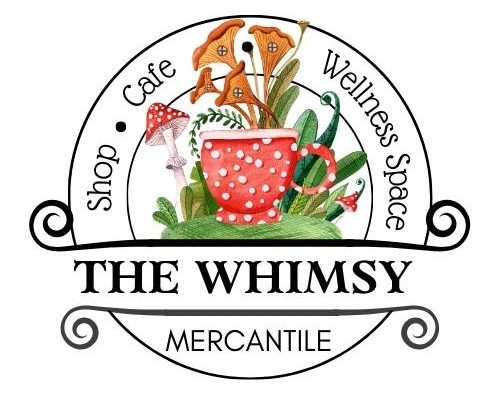There are a multitude of excellent makers of bath & body care products out there today and the number is steadily growing. This is something to be truly celebrated! What sets my products apart, you ask? Well, I’d like to think I delve into nature a little bit more than the average maker. I’m a firm believer in the healing power of plants so most of my products are infused with organic herbs. Not only will you get a fabulous lotion or face cream from me, but you’re also more likely to enjoy benefits beyond just moisturization and a nice smell.
Sadly, it’s illegal for me to tell you any health benefits you may receive by using my products. All I’m really allowed to say is that my soap will clean you, my lotion will moisturize you, and my salves will calm you…that’s about it. However, I can point you to some herbal resources that have informed what I use and why I use them in my products.
Here’s a list of some of the herbs I use and their properties:
Burdock (Arctium lappa)
- “Burdock’s diuretic, antibiotic and mildly bitter actions make if helpful for skin disorders, especially where toxicity is a key factor such–for example, in acne, boils, abscessed, local skin infections, eczema, and psoriasis.” *
- “Rich in vitamins and minerals, burdock is excellent for the skin.” **
Calendula (Calendula officinalis)
- “Calendula is above all a remedy for the skin, providing effective treatment for most minor skin problems.” *
- “It is a powerful vulnerary, healing the body by promoting cell repair, and acts as an antiseptic, keeping infection from occurring in injuries. Calendula is most often used externally for bruises, burns, sores, and skin ulcers. It makes a wonderful hair rinse.” **
Comfrey (Symphytum officinale)
- “Comfrey oil or ointment is used to treat acne and boils and to relieve psoriasis. It is also valuable in the treatment of scars.” *
Dandelion (Taraxacum officinale)
- “It has major therapeutic benefits for many conditions, including skin problems such as acne, eczema and psoriasis.” *
Echinacea (Echinacea angustifolia & E. purpurea)
- “Has been used for centuries to clear skin infections.” *
German Chamomile (Chamomilla recutita)
- “Externally, it can be applied to sore, itchy skin and eczema. A cream made from German chamomile was tested in 1987 for its ability to heal wounds and produced very positive results.” *
Lavender (Lavandula officinalis & L. angustifolia)
- “The oil is an invaluable first aid remedy. It is strongly antiseptic, helping to heal burns, wounds and sores. Rubbed on insect stings, it relieves pain and inflammation…and encourages a good night’s sleep.” *
Lemon Balm (Melissa officinalis)
- “It can help significantly in the treatment of cold sores and reduces the chance of further outbreaks. It’s a first aid remedy for cuts and insect stings. Traditionally this herb has always been taken to lift the spirits.” *
Myrrh (Commiphora molmol)
- “Myrrh’s astringent and antiseptic actions make it a useful treatment for acne and boils, as well as for mild inflammatory skin problems. Myrrh is one of the most effective herbal medicines in the world of sore throats, canker sores, and gingivitis.” *
- “A myrrh poultice is also effective for treating boils, abrasions, and wounds.” **
Oregano (Origanum vulgare)
- “Diluted oil can be applied externally to toothache or painful joints.” *
Peppermint (Mentha x piperita)
- “Applied to the skin, peppermint relieves pain and reduces sensitivity. It also relieves headaches and migraines linked to digestive weakness. Diluted oil is used as an inhalant and chest rub for respiratory infections.” *
Plantain (Plantago major & P. lanceolata)
- “Plantain is one of the best poultice herbs… and is often referred to as the ‘green bandage.’” **
Rosemary (Rosmarinus officinalis)
- “It stimulates circulation of blood to the head, improving concentration and memory. It also eases headaches and migraines, and encourages hair growth by improving blood flow to the scalp. Applied as a lotion or diluted essential oil, rosemary eases aching, rheumatic muscles.” *
Sage (Salvia officinalis)
- “Sage’s combination of antiseptic, relaxing, and astringent actions makes it ideal for almost all types of sore throat, and it is widely used in gargles. It is also used for canker sores and sore gums.” *
Stinging Nettle (Urtica dioica)
- “It helps many skin conditions–for example, childhood eczema–and arthritic problems. Nettle slows or stops bleeding from wounds. It’s antiallergenic and treats itchy skin conditions and insect bites.” *
- “It is a great hair and scalp tonic.” **
Thyme (Thymus vulgaris)
- “Applied to the skin, thyme relieves bites and stings, and helps sciatica and rheumatic aches and pains. It helps ringworm, athlete’s foot, thrush, and other fungal infections, as well as scabies and lice.” *
Here are just a few resources that I highly suggest:
*Chevallier, Andrew. The Encyclopedia of Medicinal Plants: A Practical Reference Guide to More than 550 Key Medicinal Plants & Their Uses. New York, NY: DK Pub., 1996. Print.
** Gladstar, Rosemary. Rosemary Gladstar’s Herbal Recipes for Vibrant Health: 175 Teas, Tonics, Oils, Salves, Tinctures, and Other Natural Remedies for the Entire Family. North Adams, MA: Storey Pub., 2008. Print.
*** Wyk, Ben-Erik Van, and Michael Wink. Medicinal Plants of the World: An Illustrated Scientific Guide to Important Medicinal Plants and Their Uses. Portland: Timber, 2004. Print.






